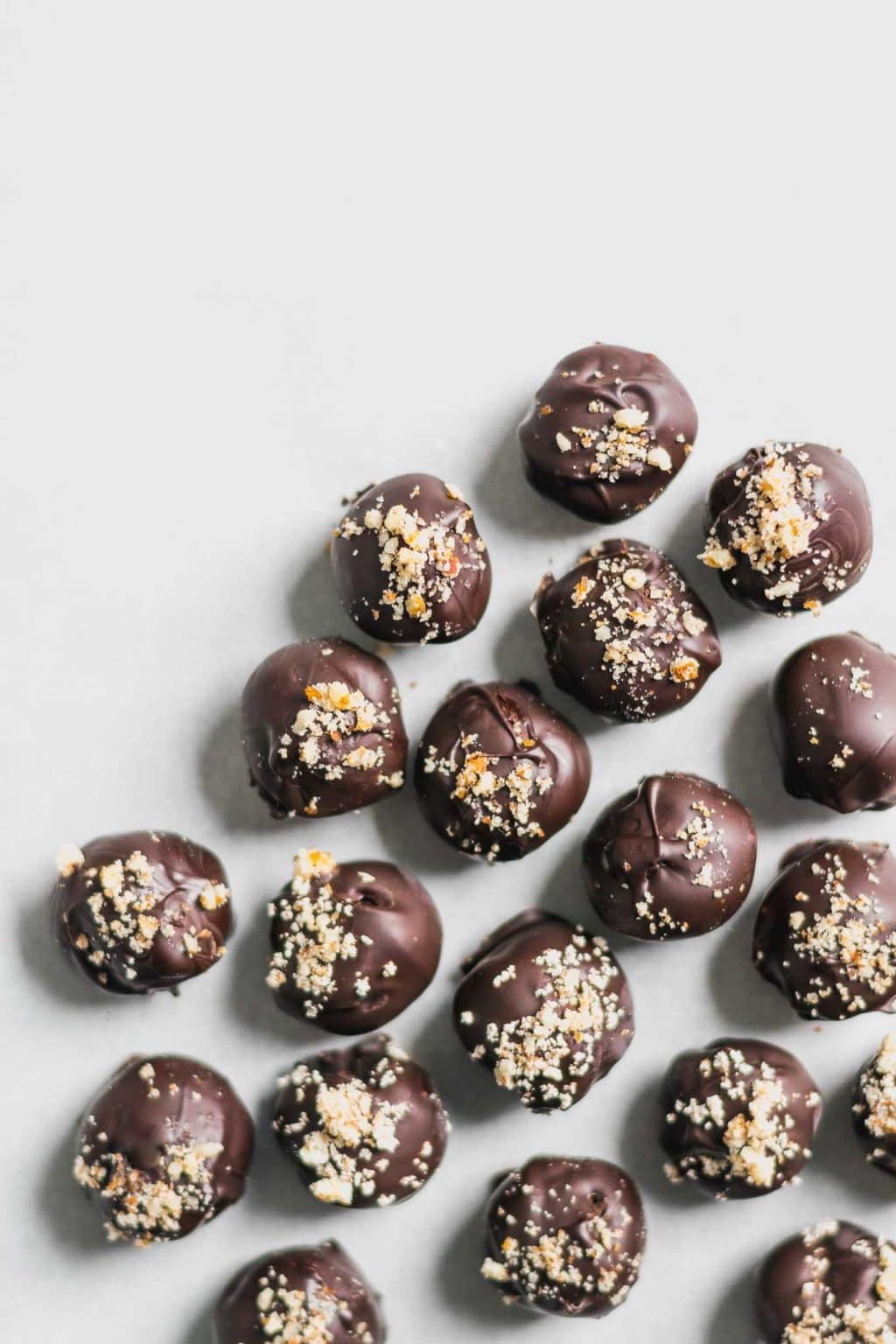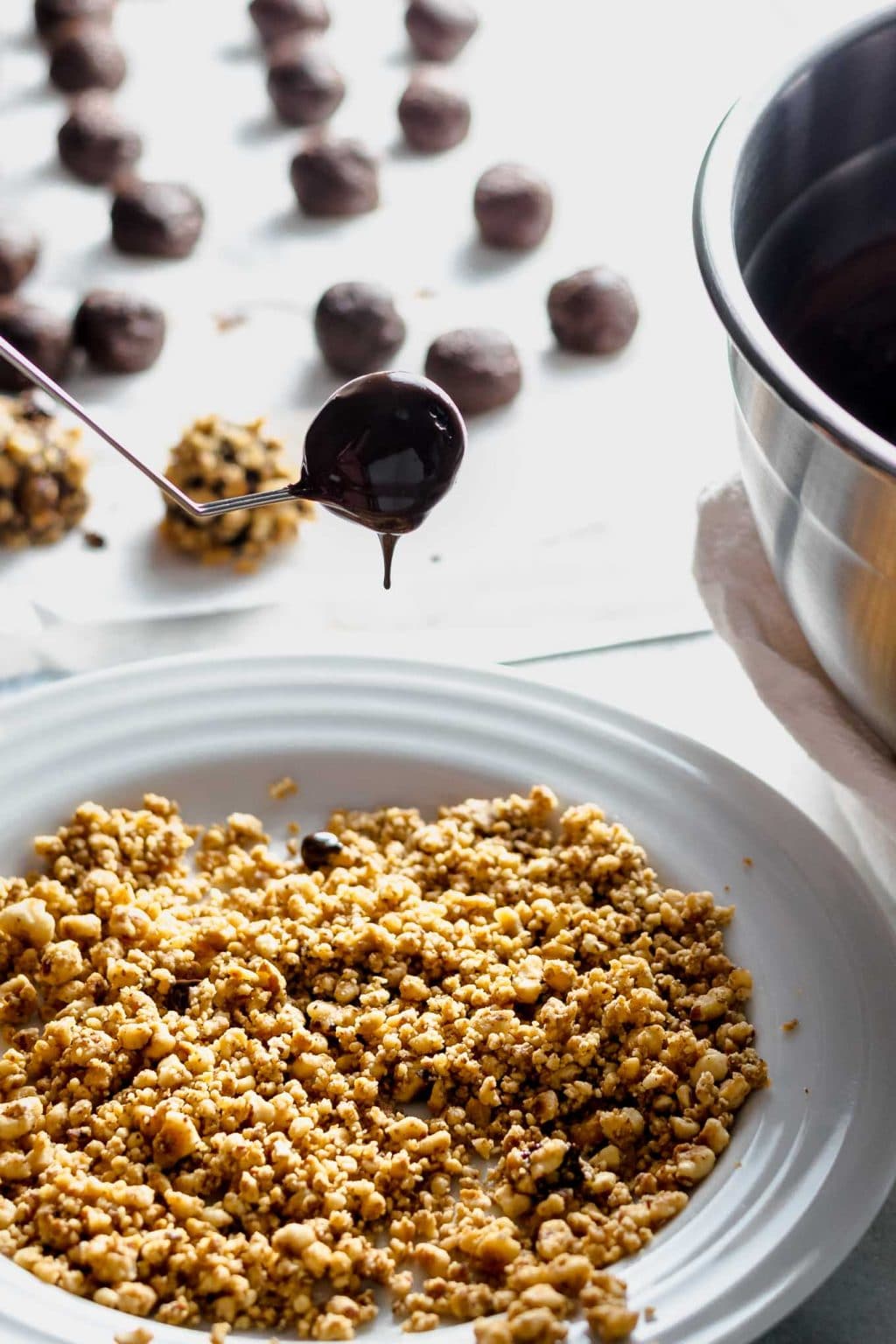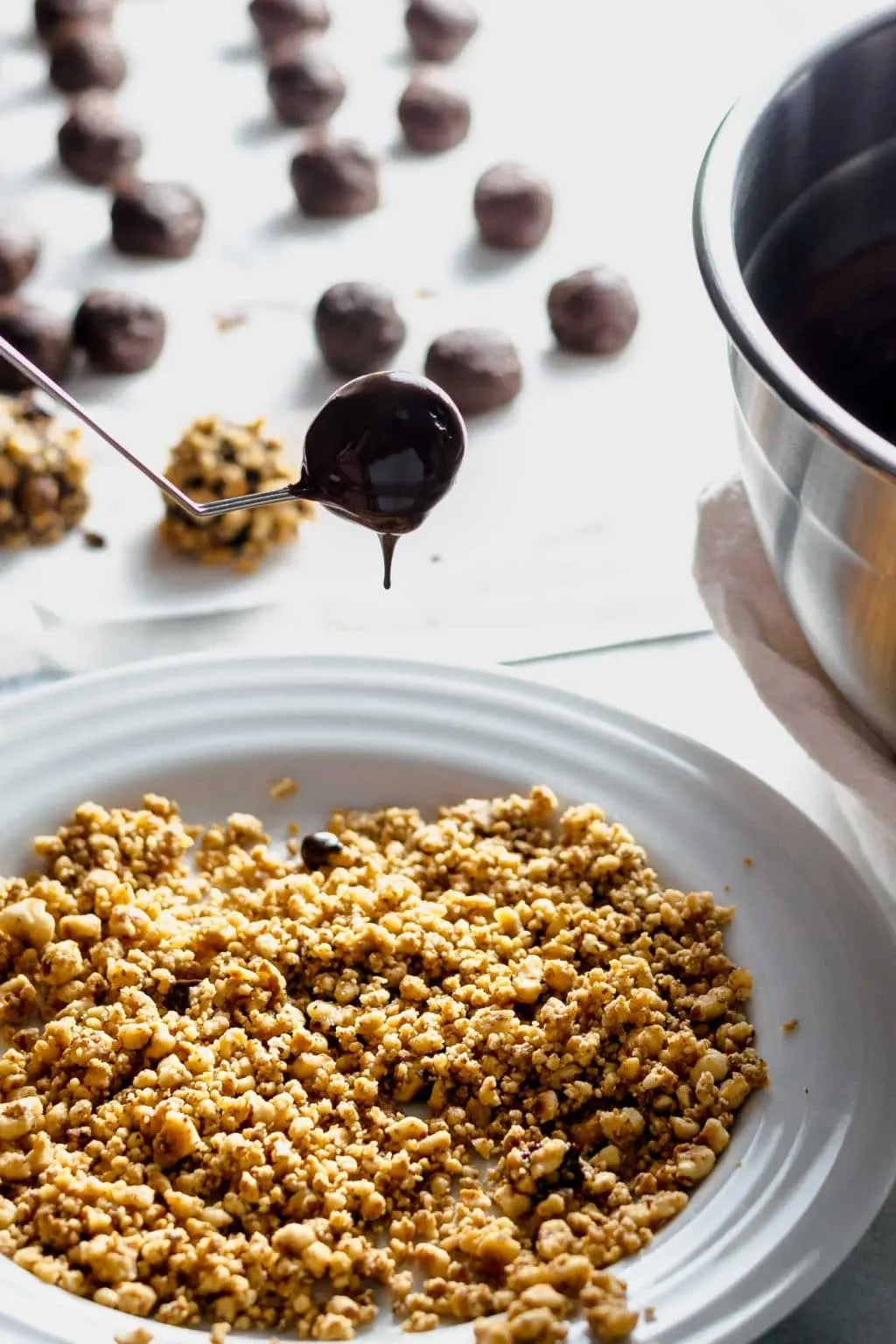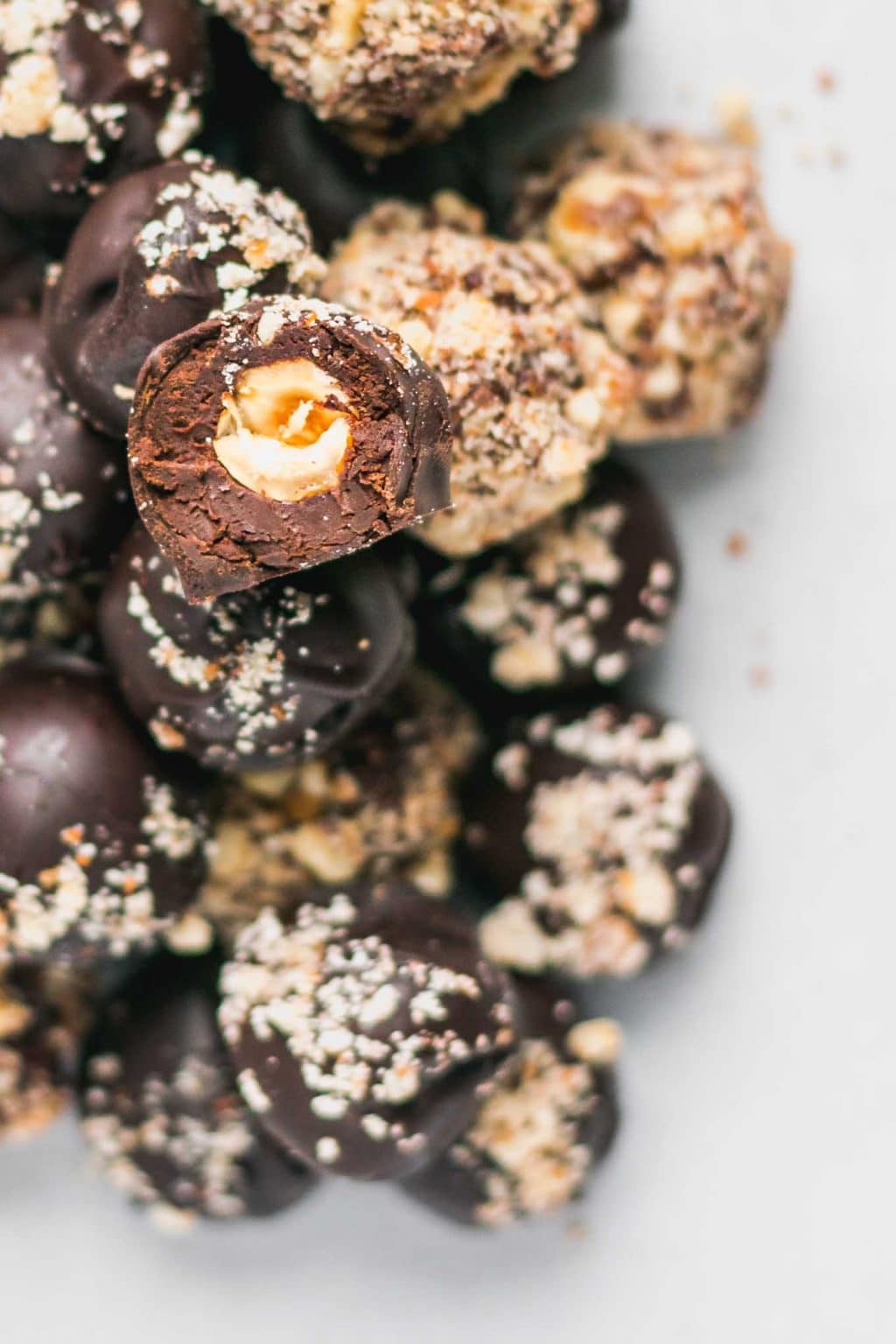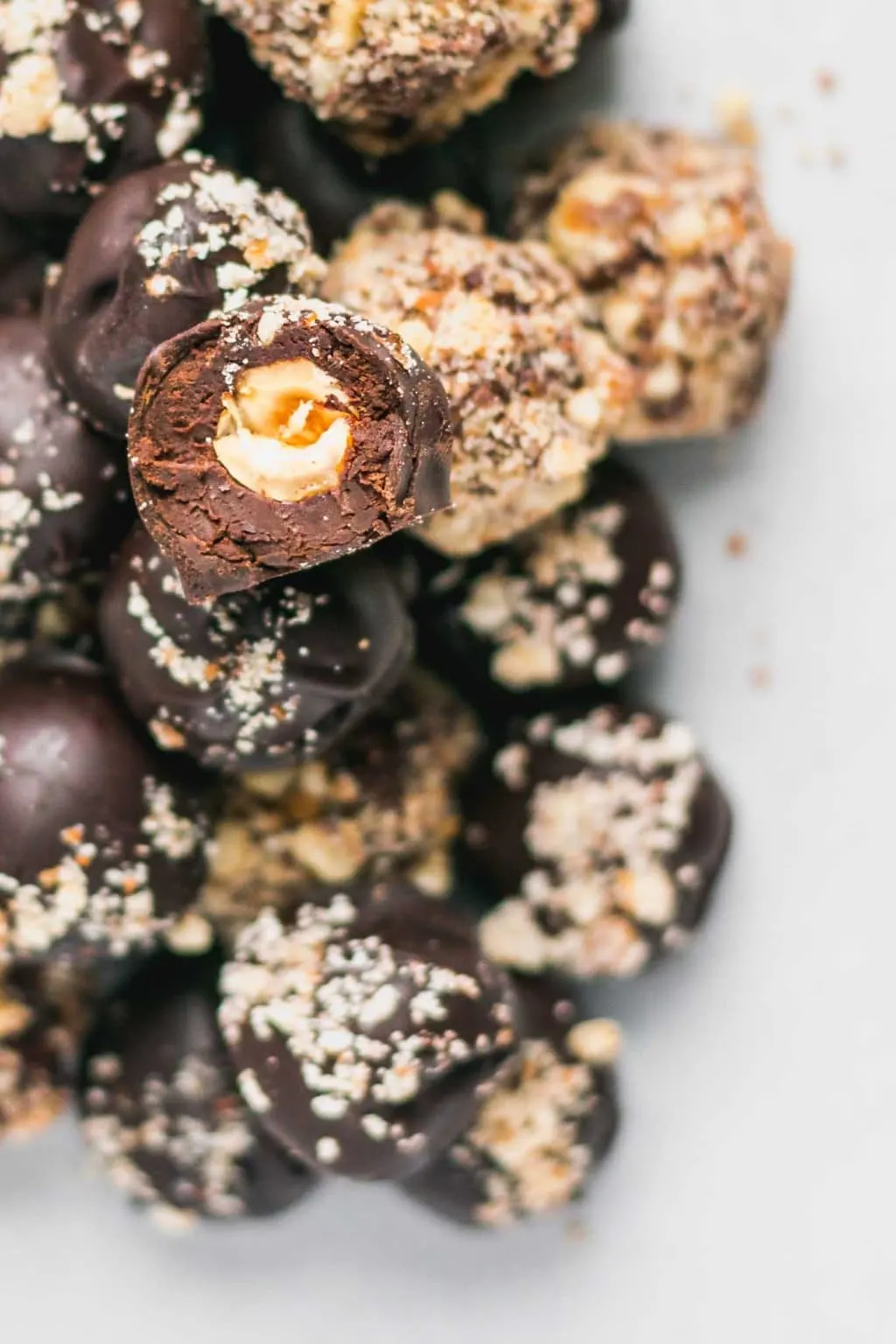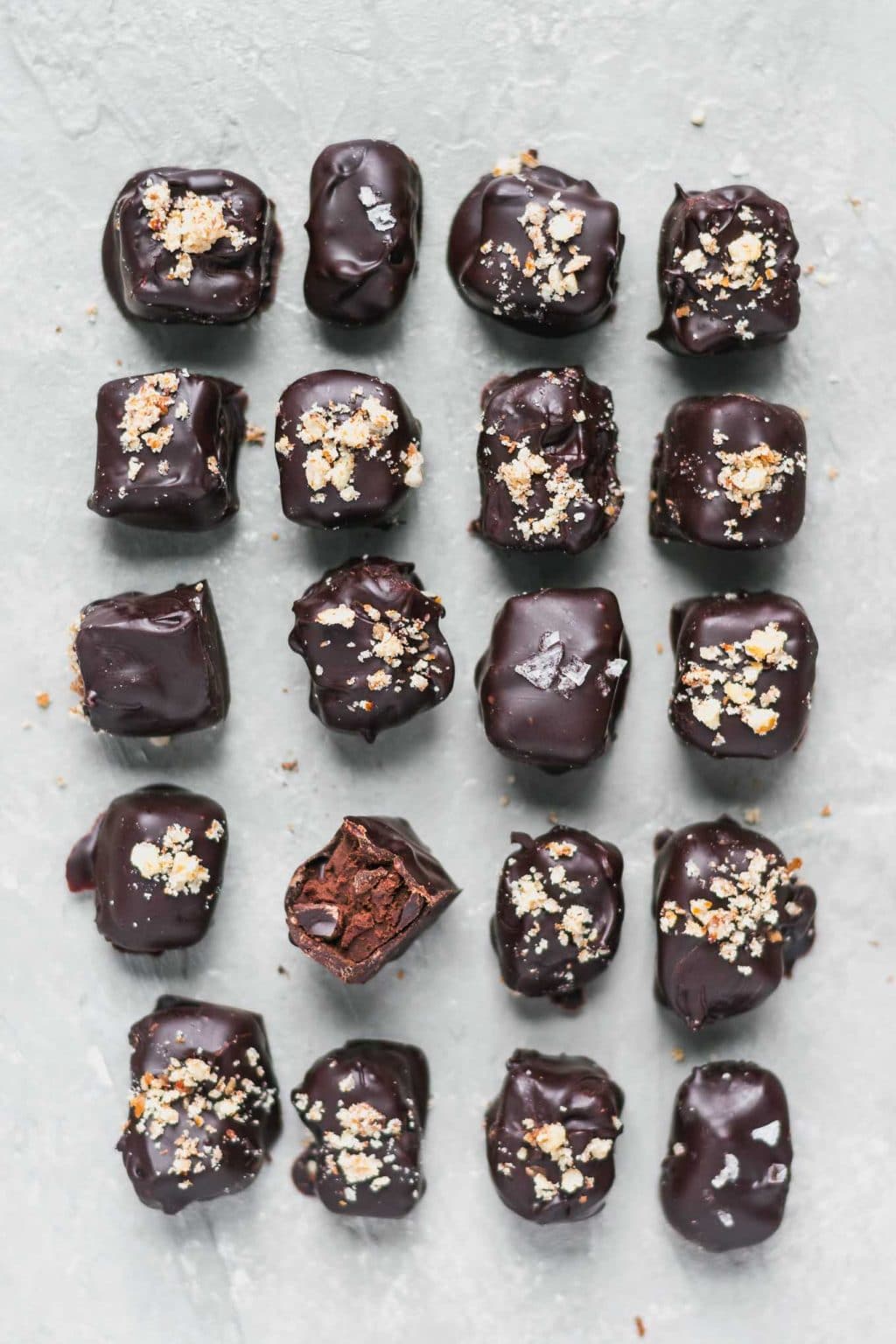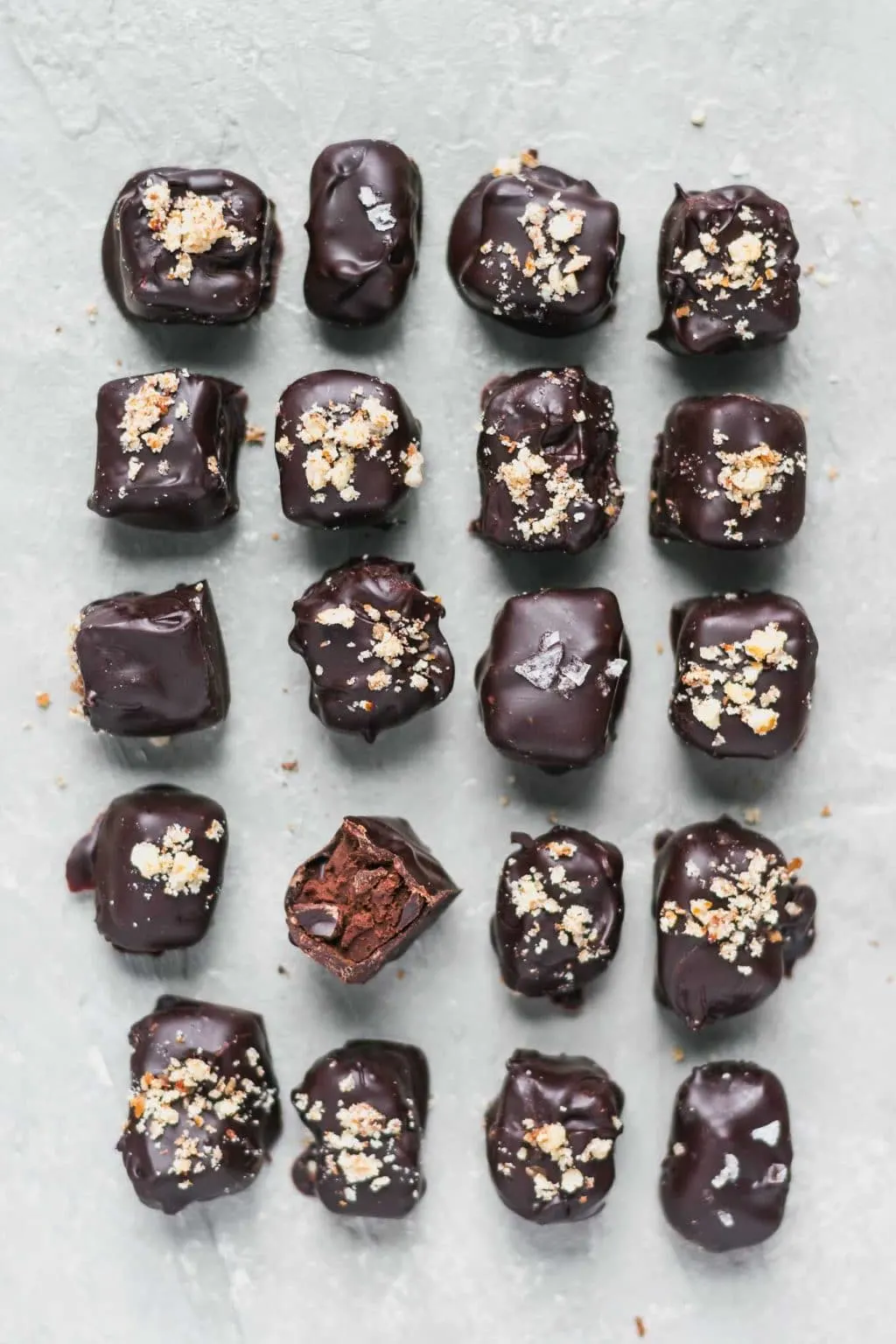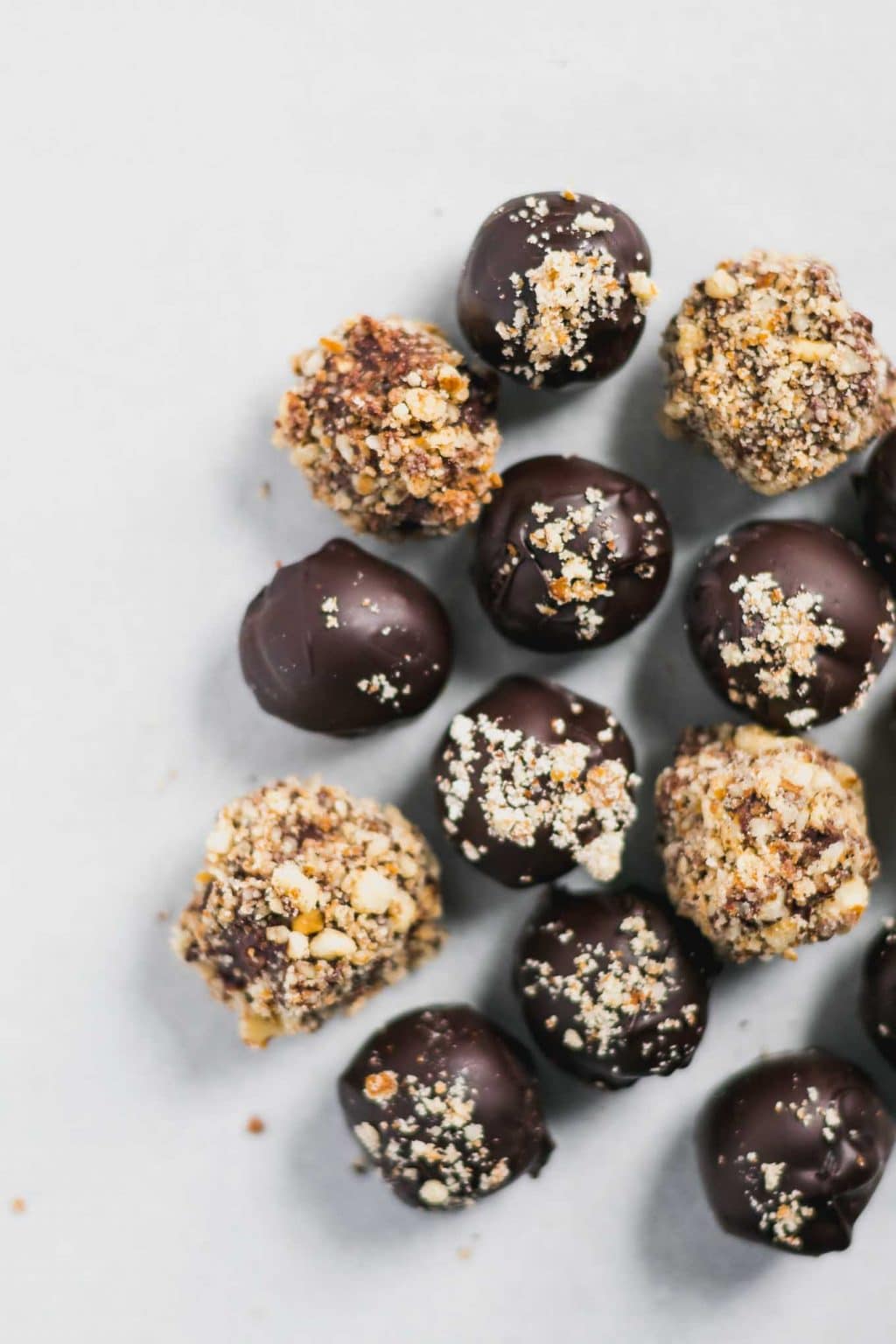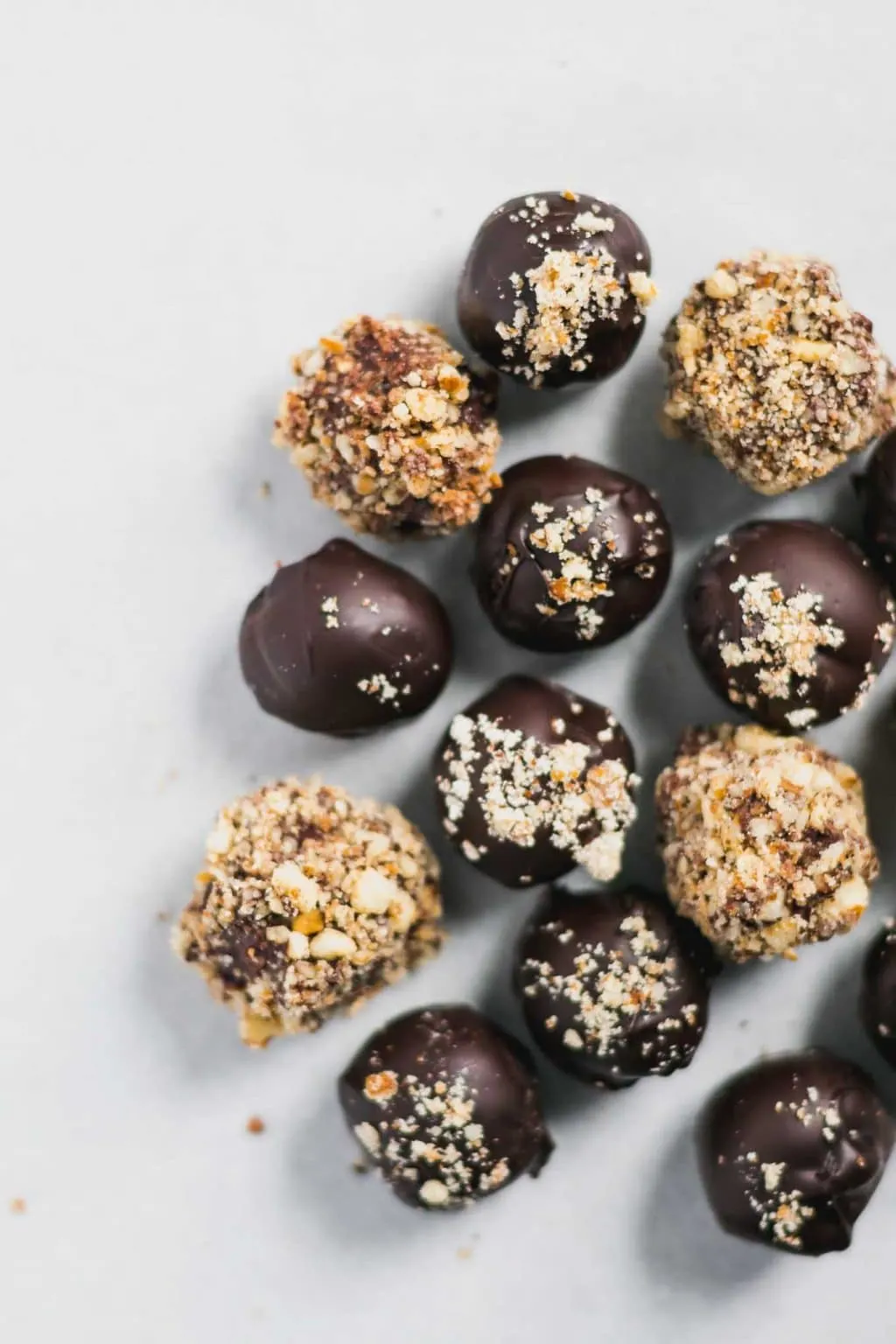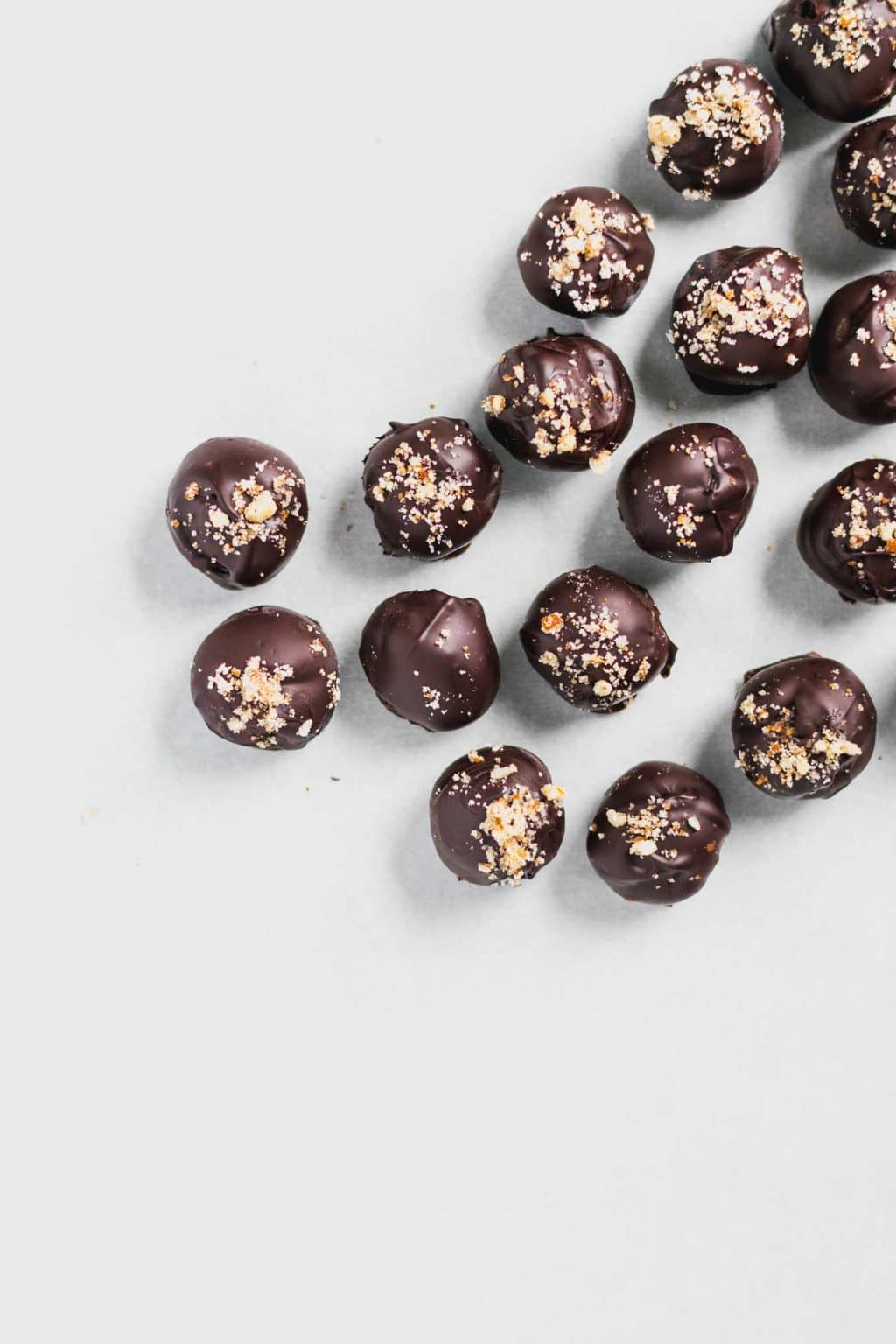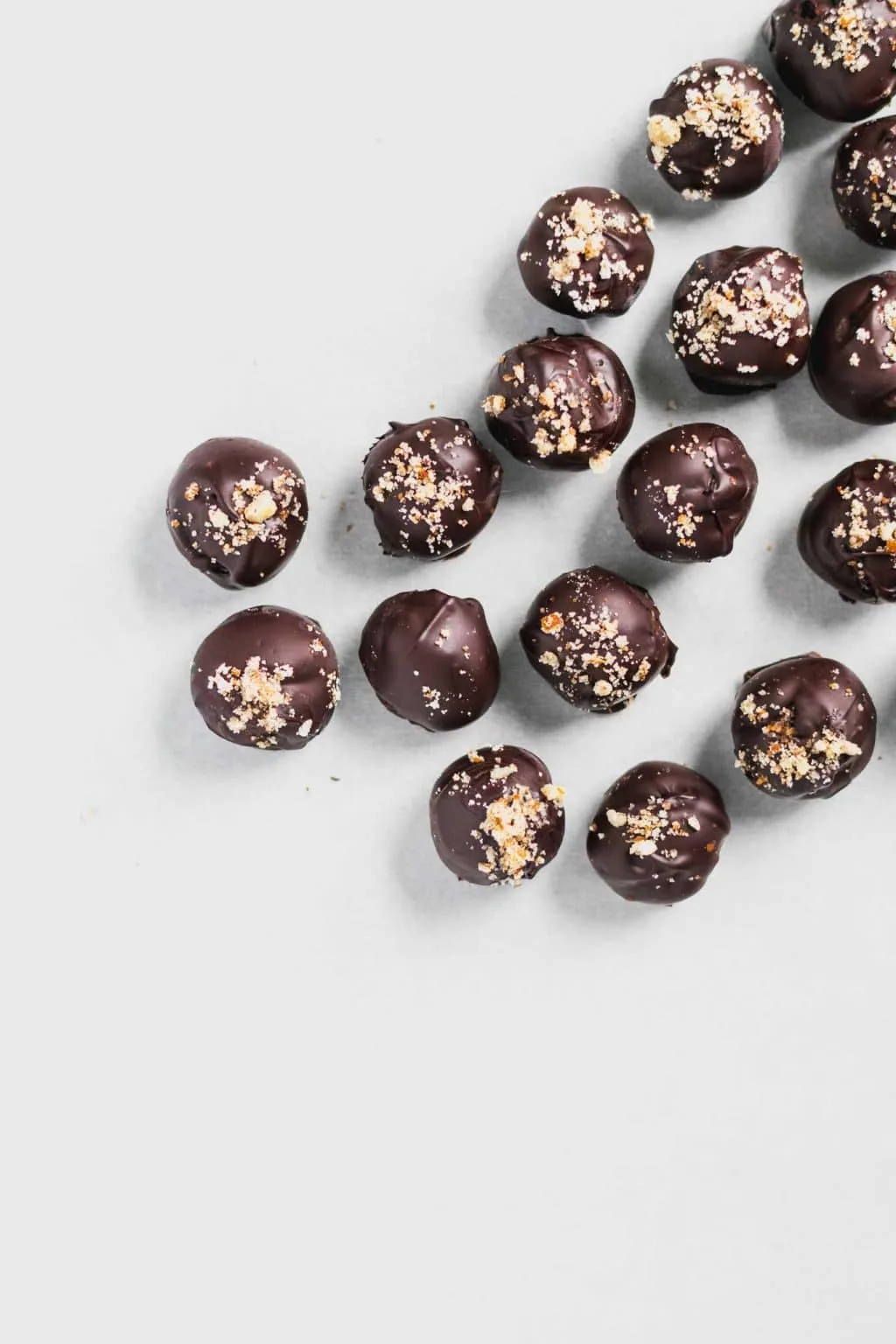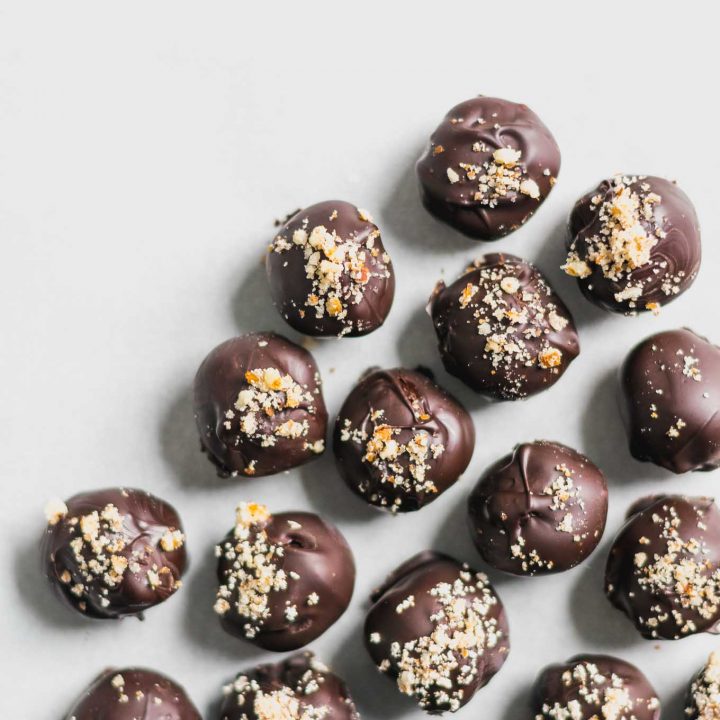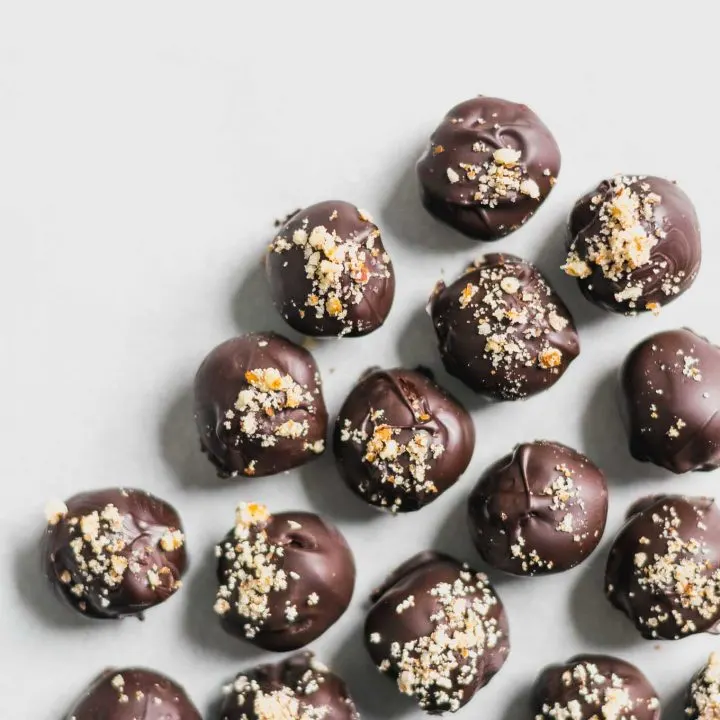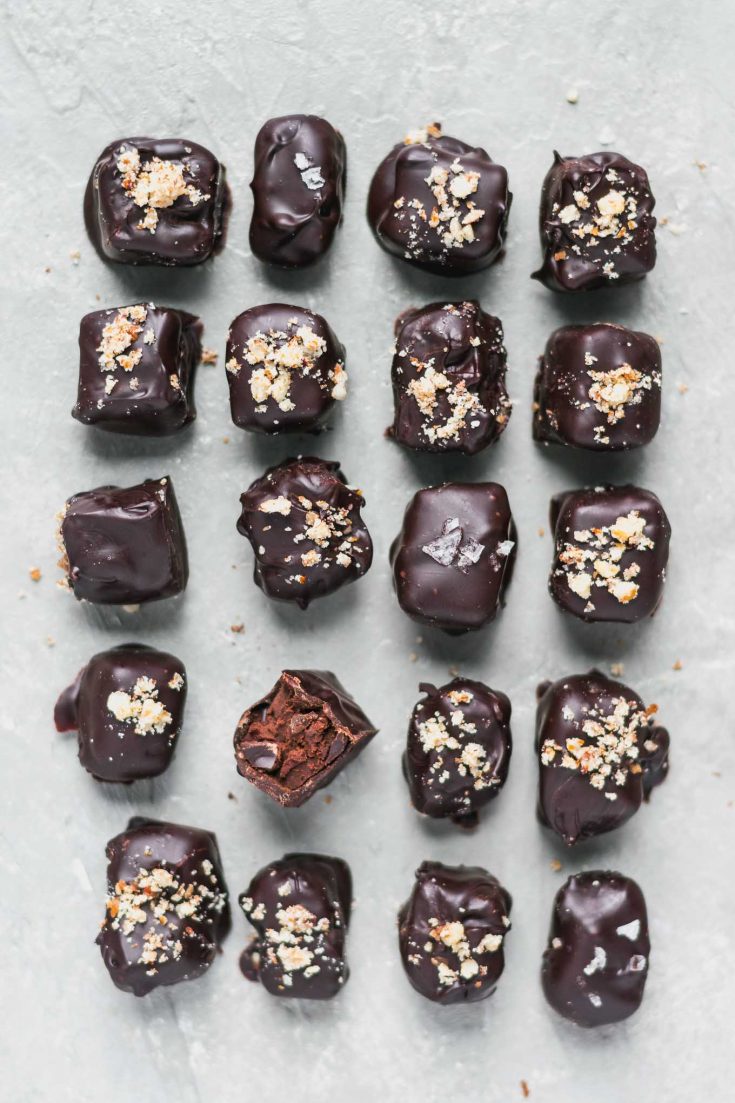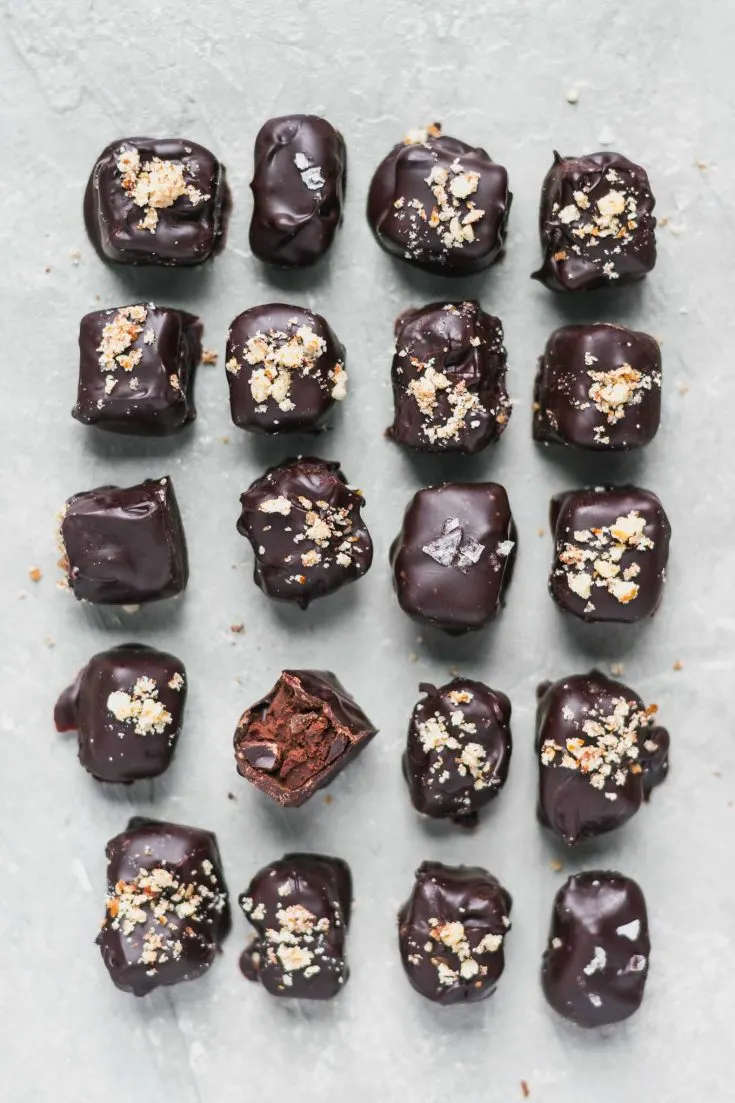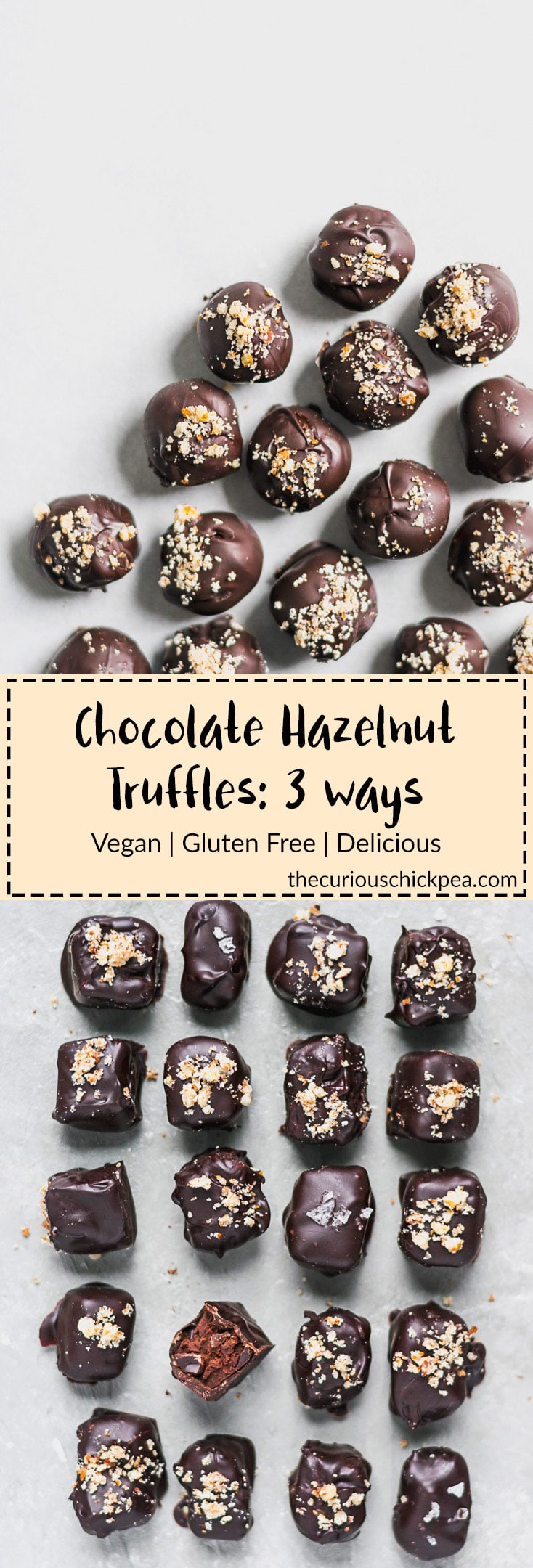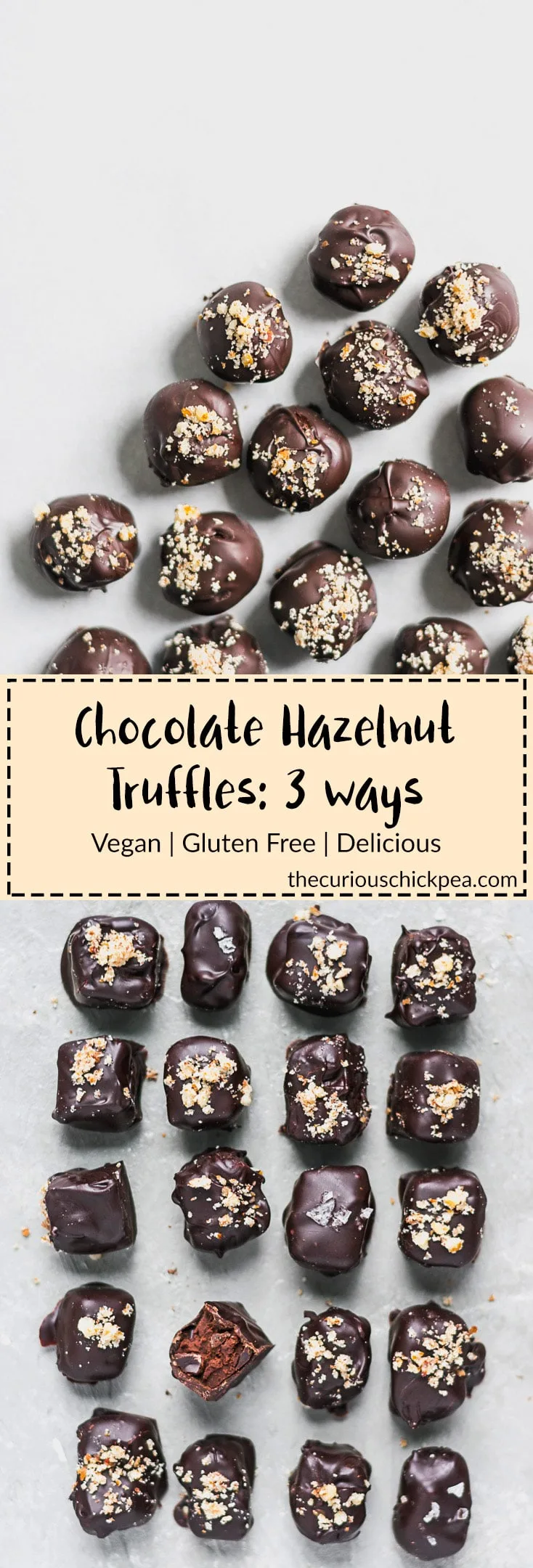Homemade chocolate truffles are probably the most romantic food gift you could give someone. Unless, of course, that person is allergic to chocolate or something tragic like that. Truffles are simply rounds or rectangles of chocolatey rich ganache, tenderly scooped or cut and shaped individually, then dipped in chocolate. They’re beautiful even if you’re inexperienced at making them, and eating them is such a special treat. In this post I’m giving you options for your truffles. You can stuff a toasted hazelnut on the inside of the truffle for a fun surprise, or leave the flavorful ganache to shine on its own. You can temper chocolate and dip into that for a crisp and shiny shell, or dip in melted chocolate then roll in ground hazelnuts for show. With so many options you’re bound to find the right fit for you. To begin, I’m going to tell you my favorite of the options: in it, the ganache is made from a homemade toasted hazelnut milk and there are no whole nuts in sight. The ganache is shaped then dipped in tempered chocolate, and a small sprinkling of ground hazelnuts -OR- a couple of flaked salt finishes it off. The simple elegance of these truffles speaks for itself. Full of flavor, with a smooth creamy texture and a chocolate coating that shatters under your teeth. So, that’s my favorite, but yours might include a hazelnut hidden in the center for a delicious textural contrast. If you don’t have the time or desire to temper chocolate (and I’ll get into the details of that soon!), dipping in melted chocolate is a great option. You’ll want to roll the truffles in some kind of coating to keep them pretty, and I like them rolled in ground hazelnuts. A coating of cocoa powder would work as well. These truffles will need to be kept in the fridge, as the chocolate is not set into its desired crystalline structure and will be soft at room temperature and more prone to melting.
Making the hazelnut ganache
Before I get into the intricacies of tempering chocolate (it’s surprisingly not that complicated!), I want to mention that I tested these truffles with 3 different hazelnut milks. I made a homemade hazelnut milk from toasted hazelnuts. This was my favorite, and I’ll include the recipe for it below. I also tested with a store bought hazelnut flavored creamer (the brand I used was Califia Farms). This was my second favorite, the rich flavor of the hazelnut stood out almost as well as the homemade, and is definitely a nice effort and time saver. The third ganache I made from a regular hazelnut milk (I used one by Pacifica). And the ganache made from this was delicious, but had a milder hazelnut flavor. The bottom line is that any hazelnut milk or creamer you can find should work well in this recipe, and homemade is always an option! So the ganache is quite easy to make, all you do is heat up the milk with a little bit of sugar and a pinch of salt, then pour it over chopped dark chocolate and cover. Let it sit for several minutes so the chocolate can melt, then add a little vanilla extract and some olive oil and whisk until the mixture is smooth. The ganache should be refrigerated until firm, and can be made up to a week in advance. Shape the ganache when it’s firm and then place back in the fridge to firm up and prepare your chocolate for dipping. This is also a good stopping point if you want to shape the truffles then dip a day later.
Tempering Chocolate
Tempering chocolate might sound scary, but it’s really just a fancy way of saying that you’re encouraging the chocolate to form a particular crystalline structure as it cools. If you have ever melted chocolate you know that when cooled it doesn’t re-gain that firm and crisp texture that it had in the chips or bar form before melting. This is because it has the less desirable crystal structure, or a combination of its various possible crystal structures. To encourage the desired crystal structure (called beta crystals) the easiest method to use is one called the seed method. Essentially all you do is melt the chocolate in a controlled manner, then when it reaches the correct temperature you put a good sized piece of tempered chocolate (like from a chocolate bar) into the melted chocolate and stir. The desired crystal structure is more likely to form if there is an “example” crystal in their midst.
One tool you absolutely will need for this method is a kitchen thermometer. To temper chocolate you will need to melt it above a certain temperature (~110 ºF), then let it cool down to the the low 80 ºs F. While it cools you’ll want to stir it regularly. This encourages good crystal formation. Once it reaches the low 80s, you need to add your seed chocolate. Then you will need to reheat the chocolate just a little, until it’s between 88 and 90 ºF. If it goes above 91 ºF you will lose those desired beta crystals. Stir it while it heats to encourage the crystallization. Once it’s back up to the high 80 ºs F, you’re ready to dip the centers. Making truffles is an investment in time, but it’s really not that difficult and they are so fun to make! And even more fun to eat, I’ll admit. And there’s nothing quite like giving your loved ones chocolates you made with your own hands. If you make these or if you have any questions about making them, leave a comment below and let me know! And don’t forget to tag your recreations @thecuriouschickpea and #thecuriouschickpea on Instagram, or share with me on Facebook.
Notes:
Use 70% dark chocolate (68-72% should work, but I tested with 70% dark chocolate) for both the ganache and the chocolate shell (tempered or not). Any hazelnut milk should work in the recipe. I tested the ganache with homemade toasted hazelnut milk (recipe below), store bought hazelnut creamer, and store bought hazelnut milk. It’s a good idea to have extra chocolate on hand, in case you need to remelt and temper your chocolate (if doing the tempered finish option) Use a neutral flavored olive oil in the ganache, or substitute a neutral flavored vegetable oil. Helpful tools for making truffles include: a chocolate dipping tool set (such as this one from Ateco or this one from Wilton), and a small 1/2-tablespoon scoop (such as this one) to make quick work of shaping round ganache truffle centers. If you’re making your own hazelnut milk, a nut milk bag makes easy work of it. Lastly, if you’re tempering chocolate, a kitchen thermometer is a necessity. Be very careful to not let water touch the melted chocolate, if this happens the chocolate will seize and you will no longer be able to use it for dipping, either with tempered chocolate or just plain melted chocolate. You shouldn’t throw it away, however, typically you can just add boiling water to it until it becomes smooth once again. Then you can use it to make a ganache or a chocolate sauce. See this Cook’s Illustrated article for more information/tips.
*To make toasted hazelnuts, heat the oven to 325 ºF. Place the hazelnuts (1 cup for making toasted hazelnut cup, and/or 1 additional cup if filling the centers with hazelnuts) in a single layer on a rimmed baking sheet. Bake for 20-25 minutes until the nuts smell toasty and are a shade darker. Let the nuts cool, then wrap up in a kitchen towel and roll under your hands to rub off as much of this papery skin as will easily be removed. *To make toasted hazelnut milk, soak 1 cup of the toasted hazelnuts in cold water for at least 2 hours, though ideally overnight in the fridge. Drain and rinse the soaked hazelnuts, then place in a blender along with 2 cups of water and 1 tbsp of maple syrup or your choice of sweetener. Blend on high for a few minutes (depending on your blender) until you have a creamy liquid that is minimally gritty. Strain your milk through a nut milk bag, or make your own by lining a fine mesh strainer with several layers of overlapping cheese cloth. Squeeze out all the excess liquid. Save the remaining hazelnut pulp for another use (cookies, crackers, smoothies, etc). The milk should last 3-5 days in the refrigerator. Separation is normal, shake to recombine. *To make ground hazelnuts, just pulverize the whole nuts in a food processor until you have made fine crumbs. This works better with un-toasted nuts, as the toasted nuts break down and release their oil more readily for a stickier nut coating. Truffle recipe adapted from Vegan Chocolate
